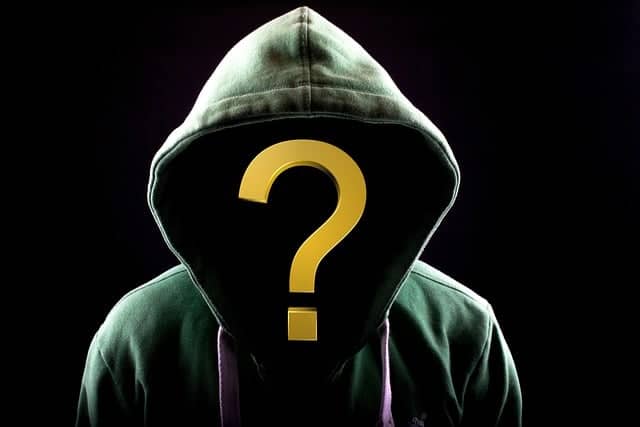Who is the Beast in Lord of the Flies? In William Golding’s classic novel, this question haunts the minds of the stranded boys as they grapple with their own fears and descent into savagery. The imaginary beast that frightens all the boys stands for more than just a physical threat; it represents the primal instinct of savagery that exists within all human beings. As the story unfolds, Golding explores how this inner beast emerges and consumes even the most innocent among them. Through vivid symbolism and unsettling imagery, Lord of the Flies forces us to confront our own capacity for darkness and raises profound questions about human nature. In this article, we will delve into the depths of this enigmatic character, attempting to shed light on its true identity and significance within the narrative.
Who is the Beast in Lord of the Flies? (Answer)
In William Golding’s classic novel, Lord of the Flies, one recurring question that haunts both the characters and readers alike is the identity of the “beast.” Throughout the story, this mysterious entity fuels fear, paranoia, and chaos among a group of young boys stranded on a deserted island. While some may argue that the beast represents an external threat or even a supernatural force, a closer examination reveals that the true nature of the beast lies within each individual.
At the start of the novel, the boys’ imagination conjures up terrifying images of a creature inhabiting the island. They describe it as a giant snake-like beast or a shape-shifting monster lurking in the shadows. Fear takes hold as they believe this beast is responsible for their isolation and threatens their survival. However, as time goes on and their fear intensifies, they begin to project their own inner darkness onto this external entity. As the boys become increasingly savage, the beast seems increasingly real.
As Ralph and Piggy struggle to maintain order and civilization among their peers, Jack capitalizes on their fear by manipulating them with tales of a ferocious beast that can only be appeased through sacrifice. This fear-mongering allows Jack to gain power over his followers and establish himself as a leader based on violence and savagery. The boys’ belief in this imagined monster drives them further into madness and barbarism.
While the other boys fear the beast, Simon is the first to realize there is no actual physical beast on the island. Instead, Simon recognizes that the beast exists within themselves. During his encounters with “The Lord of the Flies,” which is actually a severed pig’s head impaled on a stake, Simon has an epiphany where he realizes that it is not an external force but rather the evil inside the boys. The pig’s head speaks to him, saying, “Fancy thinking…the Beast was something you could hunt and kill! You knew didn’t you? I’m part of you? Close! Close! Close! I’m the reason why it’s no go? Why things are what they are?” (Golding, 143). This revelation suggests that the true beast is humanity’s inherent evil and the darkness in each person’s heart.
Ultimately, Golding’s portrayal of the beast in Lord of the Flies is a powerful allegory for the dark side of human nature. It highlights how fear and ignorance can distort reality and lead to destruction. The novel suggests that while external threats may exist, our inner demons often pose the greatest danger. The boys’ descent into savagery serves as a chilling reminder of the potential for cruelty and violence that lies within all individuals.
Is Simon the beast in Lord of the Flies?
No, Simon is not the beast in Lord of the Flies. He is a character who possesses a deep understanding of human nature and represents goodness, empathy, and spirituality.
Why is the beast called Lord of the Flies?
The beast is called Lord of the Flies because the pig’s head becomes covered for flies and because it is a literal translation of the biblical name Beelzebub, which refers to a powerful demon in hell, often associated with the devil. This name of the beast symbolizes the destructive and evil nature that resides within the boys on the island as they become increasingly savage and ultimately lose their humanity by the end of the novel.
What does the Lord of the Flies symbolize?
The Lord of the Flies symbolizes the inherent darkness and evil that resides within every human being. It serves as a physical representation of the beast, representing the power of evil that can consume individuals. Furthermore, it acts as a metaphorical Satan figure, awakening and evoking the primal instincts and destructive nature that exist within all human beings.
When is the beast first mentioned in Lord of the Flies?
The beast is first mentioned in Lord of the Flies during a group meeting to establish a leader when one of the littluns expresses concern about it. Shyly, another boy speaks up for him and mentions that the boy believes there is a “snake-thing” that could be considered a beastie.
Is the beast in Lord of the Flies a snake?
No, the beast in Lord of the Flies is not depicted as a snake. The beast is a symbol that represents the innate evil and darkness within the boys themselves, signifying their descent into savagery and loss of civilization on the uninhabited island.
Conclusion
In conclusion, while there are various interpretations of who or what the beast represents in Willaim Golding’s Lord of the Flies, it becomes evident that it symbolizes the innate evil residing within each person. As fear takes hold and civilization crumbles, this darkness manifests itself in different ways among the stranded boys. By exploring their own inner demons projected onto an imagined external threat, Golding emphasizes the fragility of civilization and highlights humanity’s capacity for destruction when faced with adversity.
